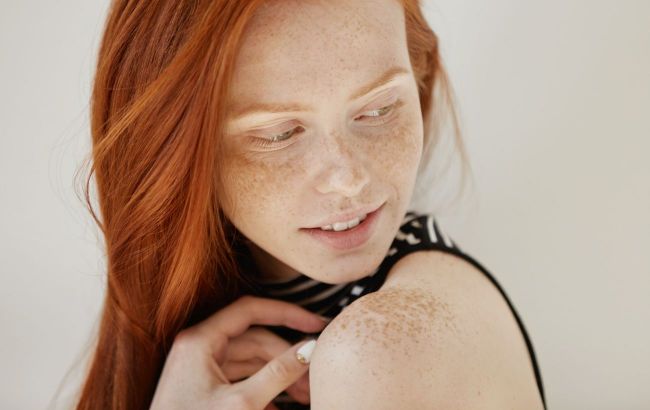Not just sun: Unexpected reasons behind pigment spots revealed
 Reasons for skin pigmentation revealed (photo: Freepik)
Reasons for skin pigmentation revealed (photo: Freepik)
The sun, hormonal changes, or even perfumes – all of these can cause pigment spots. It is important to know how to prevent unwanted changes to the skin, according to the new edition of the Ukrainian project The Skin Speaks.
How they appear
Ukrainian doctor and researcher Nataliia Bobok explained that melanin is responsible for the color of the skin, hair, and eyes, and it is the reason pigment spots form, even in people with darker skin tones.
According to her, melanin is synthesized by melanocytes deep in the skin, and the enzyme tyrosinase activates them. The direct triggers are excess sun, stress, or inflammation.
There are several types of pigment spots, each with its own mechanism and behavior. Some disappear with less sun exposure, while others remain for years. Understanding the nature of a specific spot helps determine the right approach. In particular, the following are distinguished:
-
freckles – genetic, worsen with sun exposure, fade or disappear without it
-
melasma – larger dark patches on the skin caused by hormonal changes such as pregnancy, contraceptives, and sun exposure; around 50% of cases have hereditary factors
-
post-inflammatory hyperpigmentation – dark marks left after breakouts, cuts, burns, or improperly performed procedures
-
solar lentigo – a result of years of sun exposure, more common after 40, often on the face, hands, and décolleté; they do not disappear on their own
-
hypopigmentation – lighter areas caused by lack of melanin or disrupted synthesis; triggers include sun, hormones, stress, genetics, photosensitizers, and diet
Causes
Hormones estrogen and progesterone activate tyrosinase, which is why pregnancy and hormonal contraception often lead to melasma. Up to 50% of pregnant women have melasma.
The expert emphasized the role of heredity. DNA variations of the MC1R gene increase the risk of freckles, especially in people with red hair. Therefore, if pigment spots run in the family, the tendency may be inherited.
Additionally, the antibiotic tetracycline, ibuprofen, perfumes, and essential oils can also provoke pigment spots.
How to prevent pigmentation
SPF products
Photoprotection is a basic element of any anti-pigmentation routine. UV exposure is present year-round, and even short periods without SPF trigger tyrosinase.
Avoid sugar
Excess sugar activates glycation – an irreversible reaction where sugar molecules stick to collagen and elastin, indirectly increasing melanin production. At the same time, a lack of vitamin B12 disrupts pigment balance.
Safe face cleansing
The doctor added that no single cosmetic product can eliminate pigment spots, as only a consistent routine brings results. The face should be cleansed with mildly acidic products (pH 4–7) to avoid damaging the skin barrier and increasing sensitivity.
Serums and creams
The main task of these products is to reduce excess melanin production by blocking tyrosinase. Among inhibitors, vitamin C is effective and safe. A new generation fat-soluble form (THD) is 50 times more effective than water-soluble ascorbic acid. The optimal concentration of THD is 15%.
Moisturizing and restoring
This step is essential in any season, since without a properly functioning epidermal-lipid barrier, results cannot be achieved, and active ingredients are absorbed less effectively.
This material is for informational purposes only and should not be used for medical diagnosis or self-treatment. Our goal is to provide readers with accurate information about symptoms, causes, and methods of detecting diseases. RBС-Ukraine is not responsible for any diagnoses that readers may make based on materials from the resource. We do not recommend self-treatment and advise consulting a doctor in case of any health concerns.

